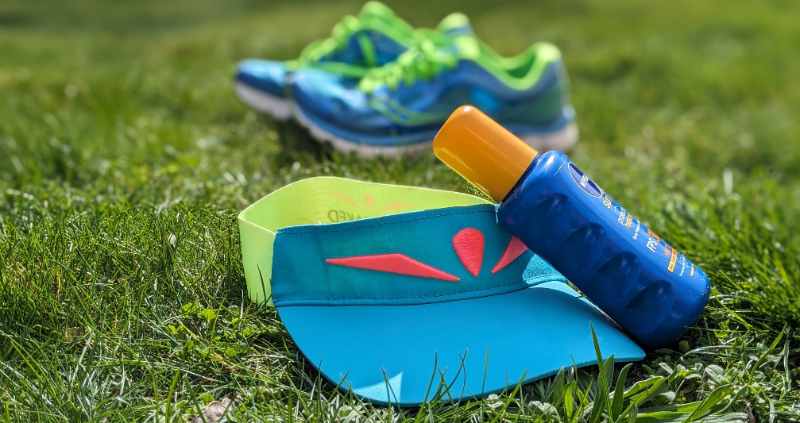Running for Beginners as an Older Runner

Running for beginners if you are a midlife runner - let's get started!
When you start running as an older runner, it throws up a whole lot of questions. Is it safe, can I do it, am I too old, how do I start, should I join a group and so on. This is perfectly natural and the more questions you ask yourself, the better equipped you'll be.
I was a beginner runner at 45 but I am still learning 10 years later. It is not so much that I am learning to run but more that I am learning about myself and what my limitations and strengths are. These change frequently depending on factors such as how energized I am, how healthy my diet, how rested I am and how motivated I am feeling.
Many people jump head first in to a run training program. These can be great but they are a bit cookie cutter and not all programs suit all people. This is especially true when it comes to older runners.
As an example, I decided to run a marathon when I was 52. I found a great 18 week training plan which said it was for 'beginners'. I was a beginner so I thought "Great, that's perfect for me". For the first 8 weeks, everything went fine. But then the fatigue set in, then the aches and pains started and before I knew it I was injured and had to stop training for 2 months. I missed the marathon and was gutted.
Basically that 'beginner program' was for a 'beginner runner' who was younger and fitter than I was and who didn't have a history of running injuries like I did.
Age does not define your ability to run. Everyone can run. However we all have to find the pace and intensity that suits us. Here's how to start running as a midlife runner:
Running for Beginners - How to Start
Running for Beginners Training Plan
You don't actually need to use a training plan when you are starting out. I would suggest only using a plan if you need something structured to motivate you or perhaps if you are training for a specific event such as doing your first 5km.
If you decide to use a running for beginners program, look at it carefully before starting. Make sure it suits your fitness and health level and also make sure that it doesn't set paces for you to run at but that it has you running by time. That way you will be running at the pace that suits you and your current fitness. How to choose the best running plan for you.
Running for Beginners Health check
Firstly, if you are in any doubt about your health or you want reassurance, get your doctor to give you the all clear to run.
When to run
When you run is entirely up to you. You want to enjoy it and not feel under pressure to get it over and done with, so pick the time of day that fits in with your daily schedule. If you don't like running in the dark or cold, see my tips on coping with winter running and running safety.
How long to run
Before you begin running always do a 15 minute warm up and when you finish your run do a 15 minute cool down. Count those times as part of your run. For your first run, start with a 5 minute run. Add to that your 15 minute warm up and a 15 minute cool down and that means you've run for 35 minutes. Yeah!
As you get stronger and feel more comfortable, increase the middle portion of your run but by no more than 5 minutes each week. Then every 4 weeks, don't increase at all so that your body has a rest.
How often to run
How often you run really depends on what you are trying to achieve. If you are running for fun, then run as you wish but not more than twice a week to start with. If weight loss or performance is your goal then start with twice a week and after a month if that is going well, then add in an extra run so you are running 3 times a week. Remember to build up slowly.
How fast to run
All your runs for the first 4 months minimum, should be slow and gentle and at an aerobic pace. If you have to gulp air or feel out of breath and your heart is pounding, then you are not running at an aerobic pace. Run with someone so that you can chat. Being able to chat comfortably is a great way of controlling your pace. How to breathe properly when running.
Taking rest days
Many people don't realize it but rest days are in fact part of your training. A rest day allows your body to adapt and to develop from the previous training. This means when you next go running, your body will be stronger. So never feel that you are being lazy by taking a rest day.
Dealing with aches and pains
At first, your body might feel rather clunky and you may start feeling achy muscles or twinges in your knees and so on. Most of these are probably normal but listen to your body. If you feel it is more than just your muscles adapting, take a couple of days off and then try again. How to avoid running injuries.Go at your own rhythm and don't get sucked in to running someone else's pace.
Running and walking
Don't be afraid to walk at times. It all counts as exercising. Plus walking can be just as a good at developing your aerobic system as running. Running vs walking and which is better.
Running with others
Some people like running on their own and others prefer to have company. I would be careful about joining a club in the early days as often you have to run the pace that the club dictates and you might not be ready for that. If you can find a running partner who is prepared to run at your pace then that is great.
The advantage of running with someone else is that it can be a way of gauging if you are going to fast. If you can chat easily to each other without panting, then great, you are running at the right pace for you. Should you join a running club?
Enjoy Yourself
Remind yourself from time to time why you are running. Nothing is worse than it being a real chore that you really don't enjoy. You want to enjoy running and be injury free, so keep that in your thoughts as you head out the door.
------ Running for Beginners ------



